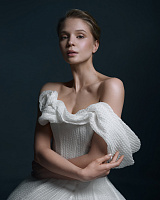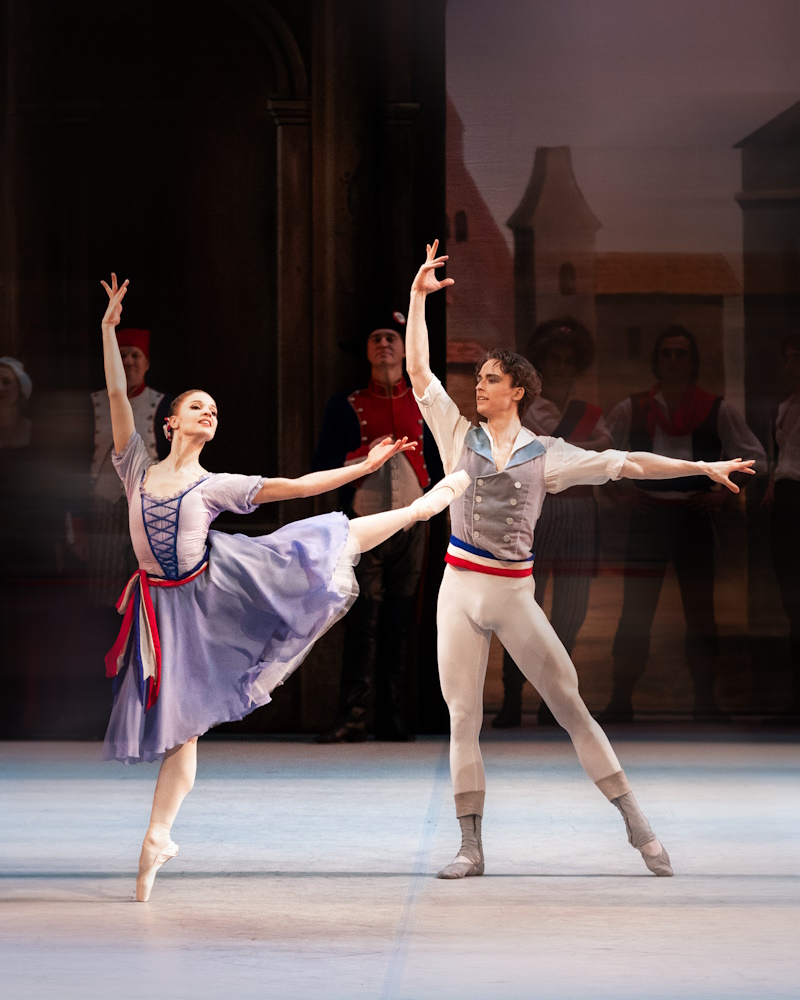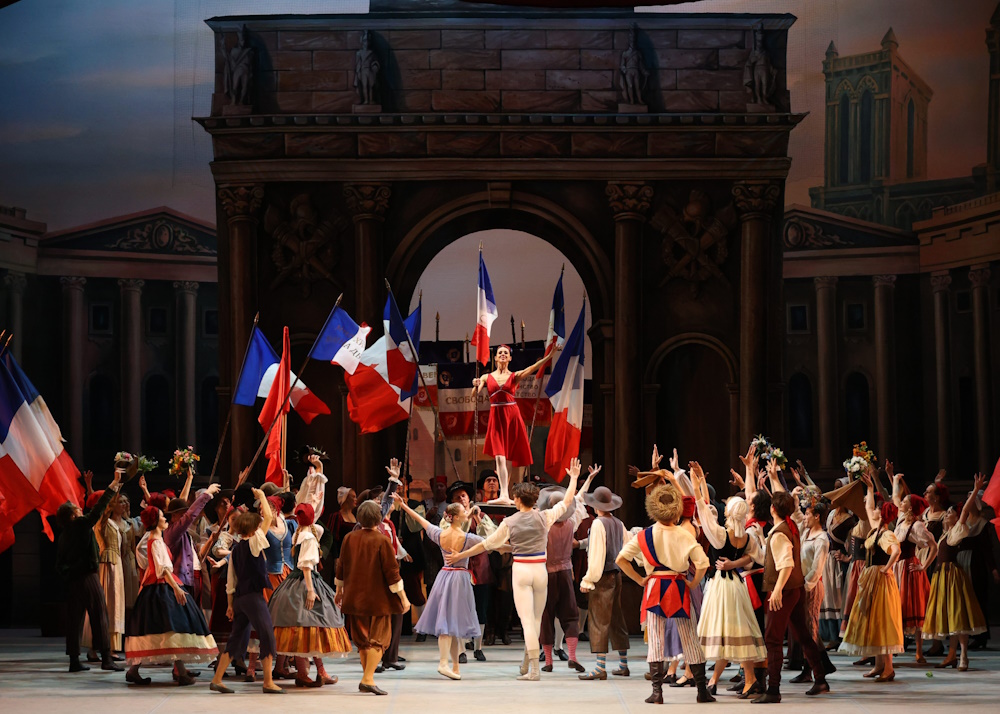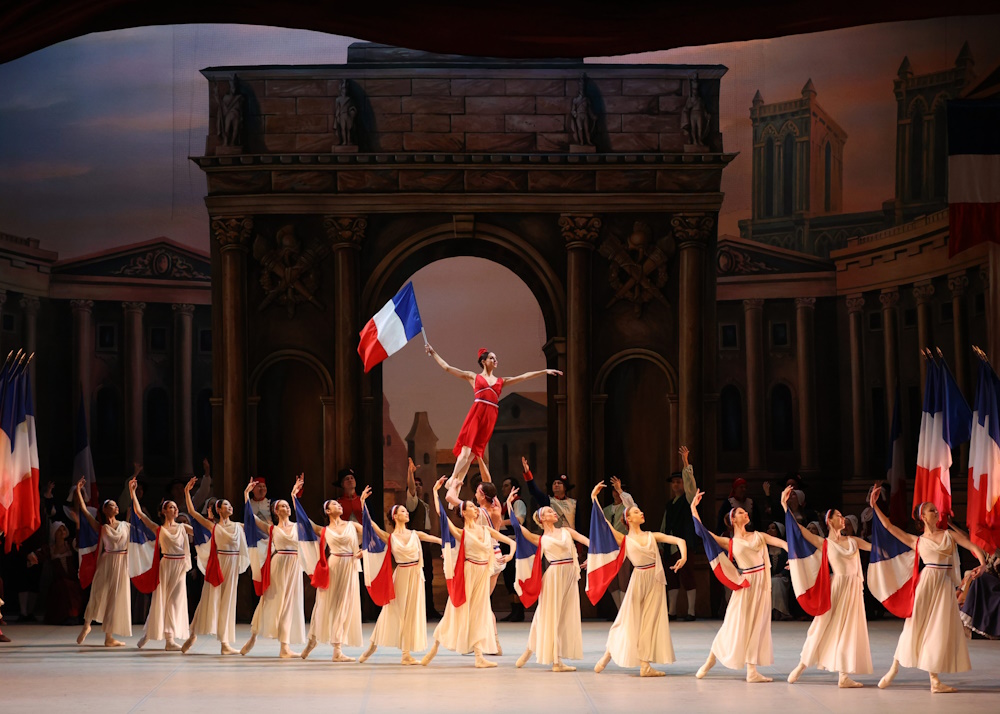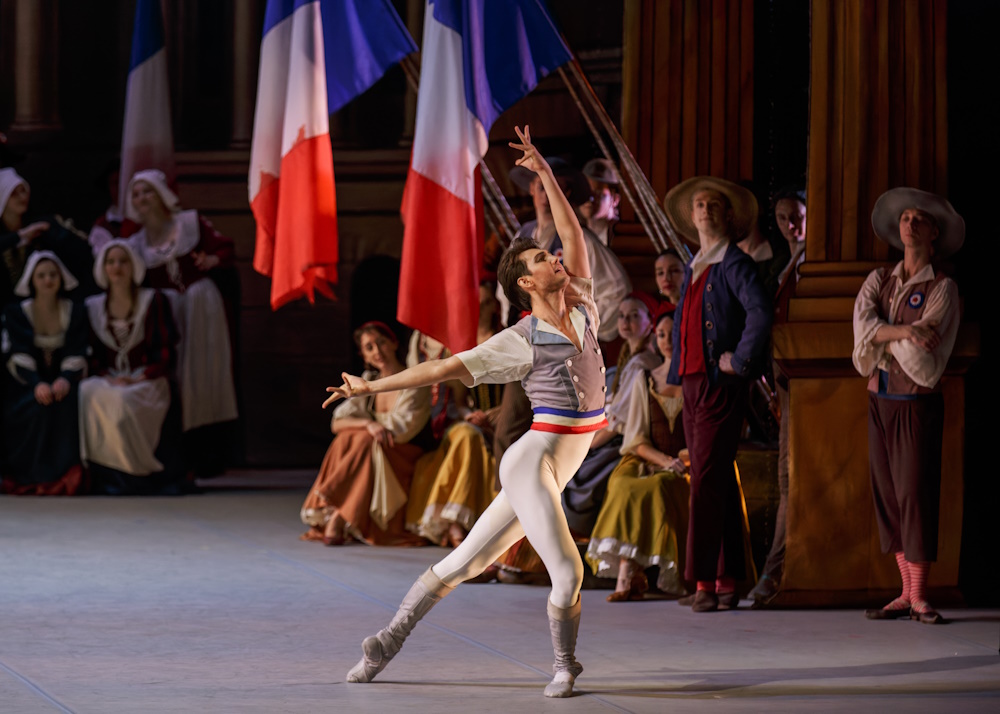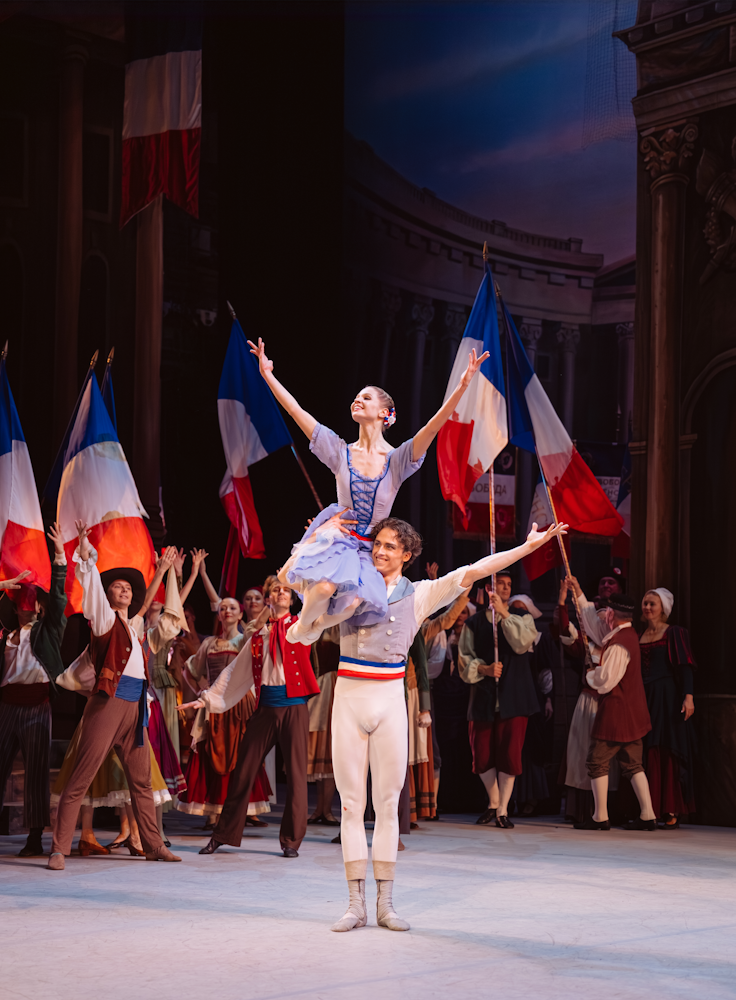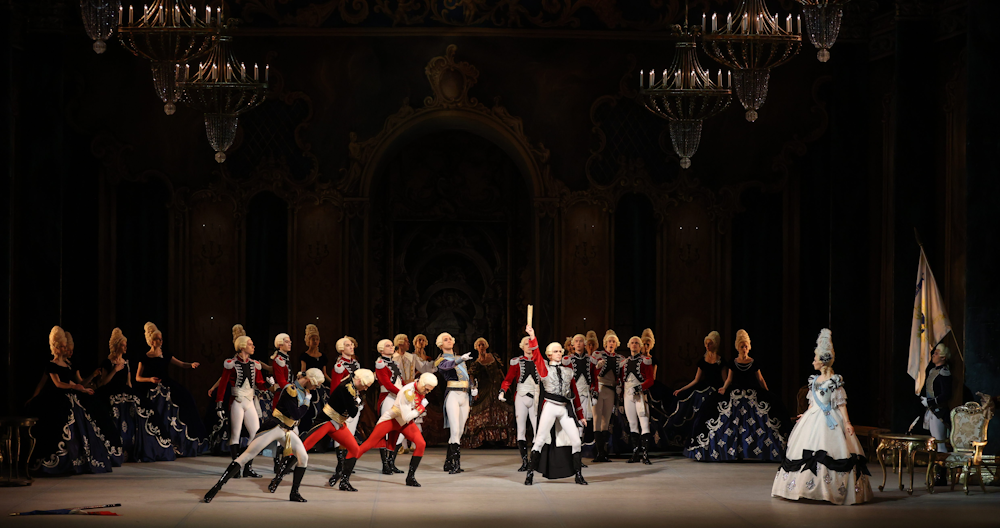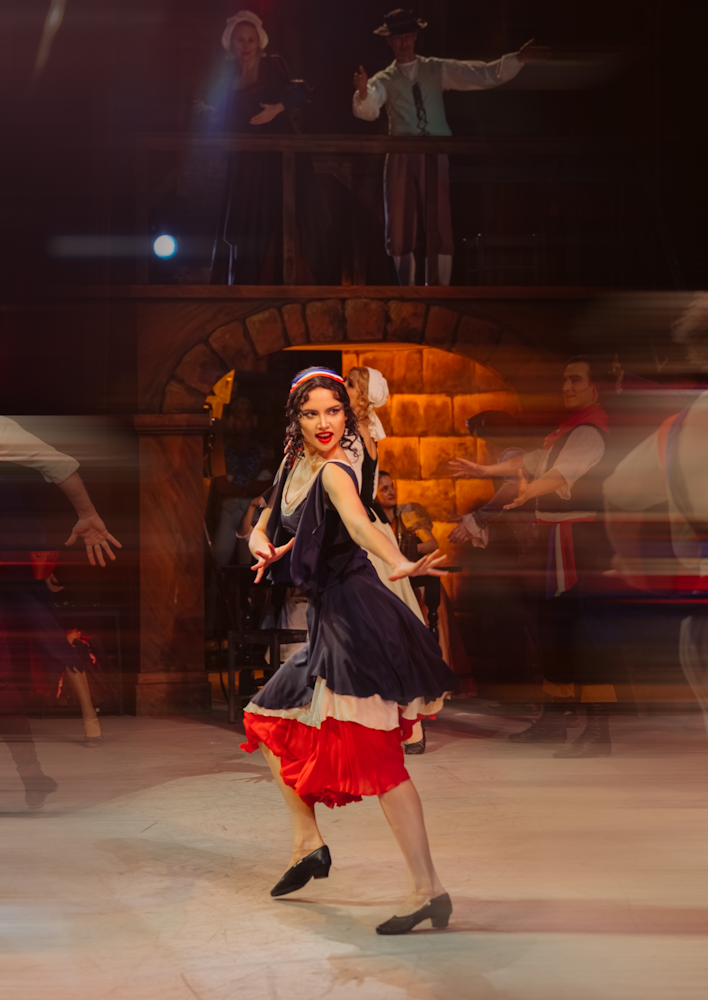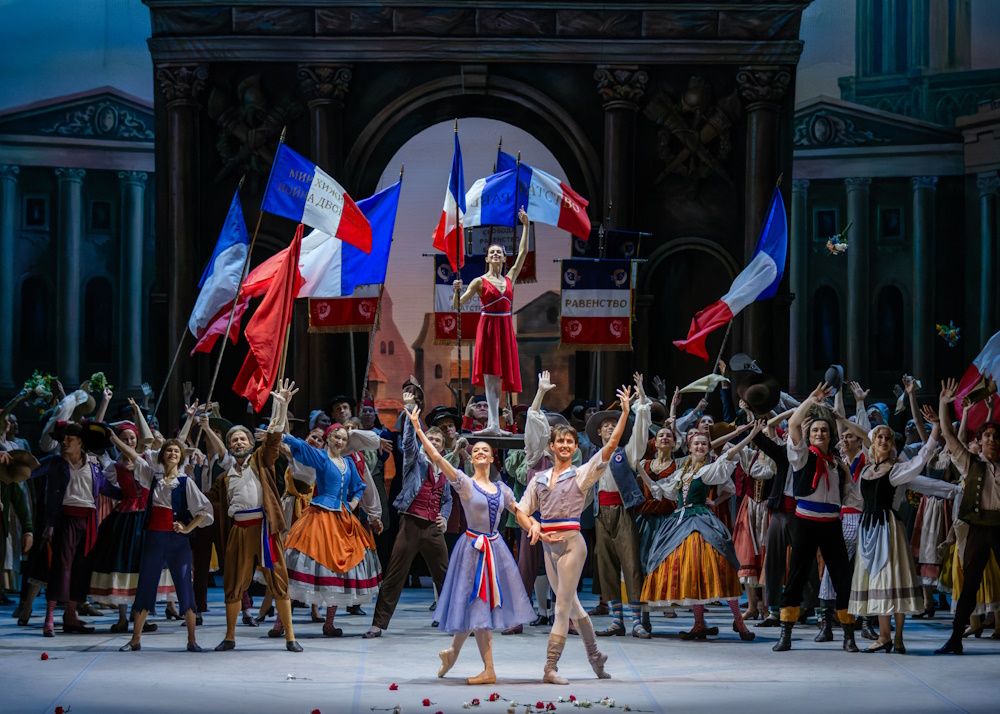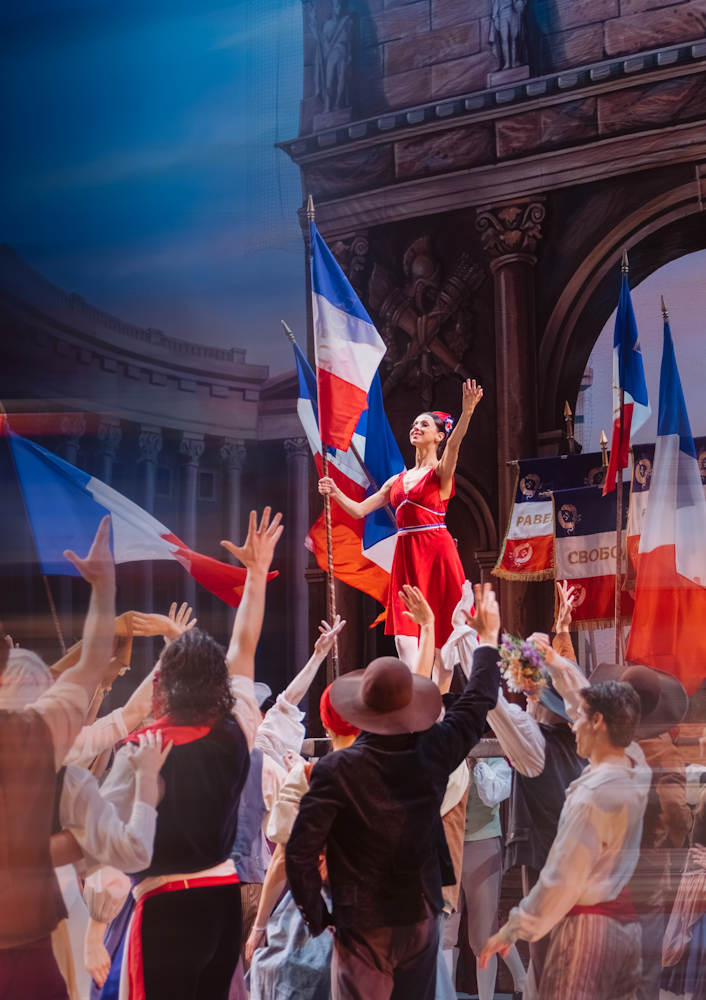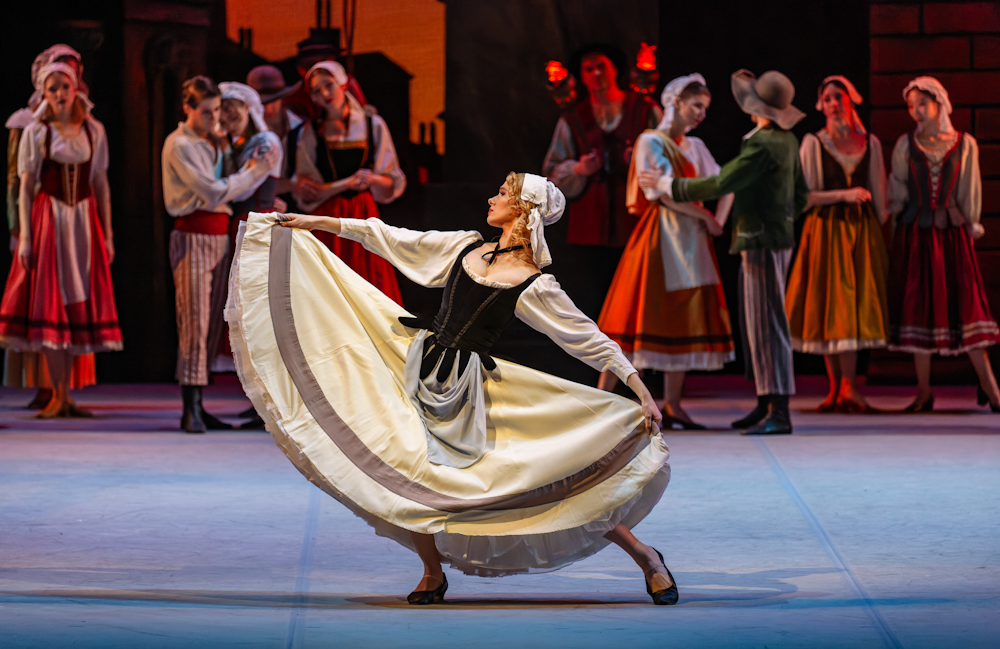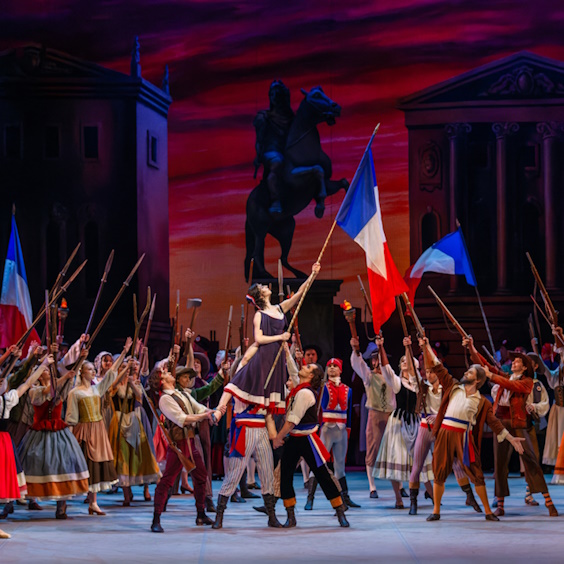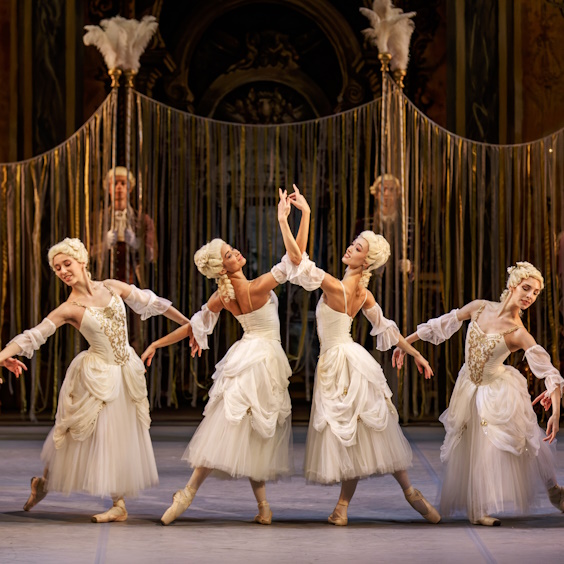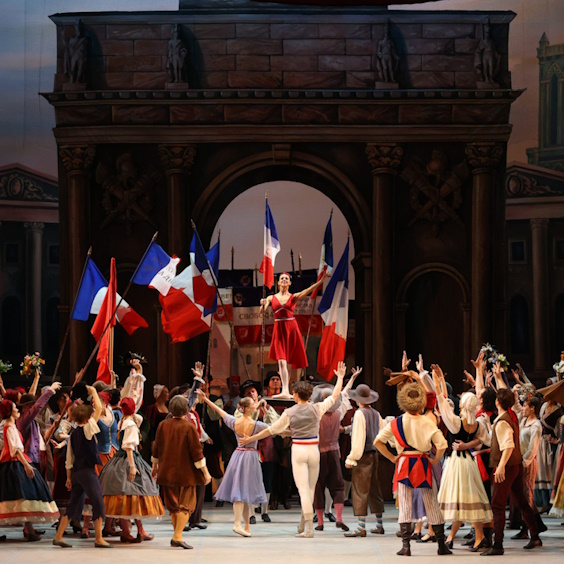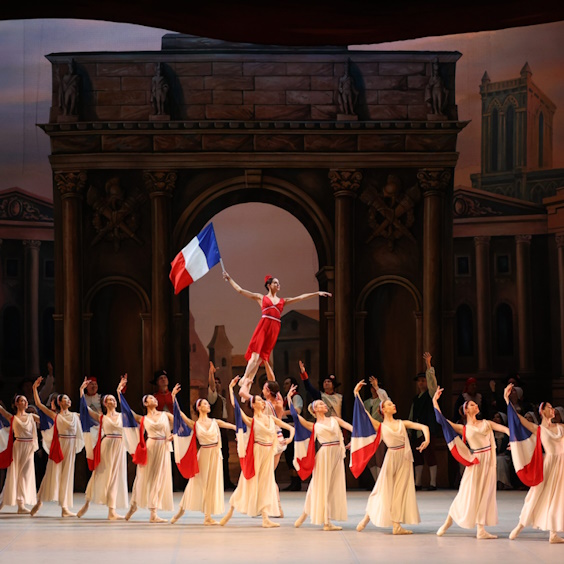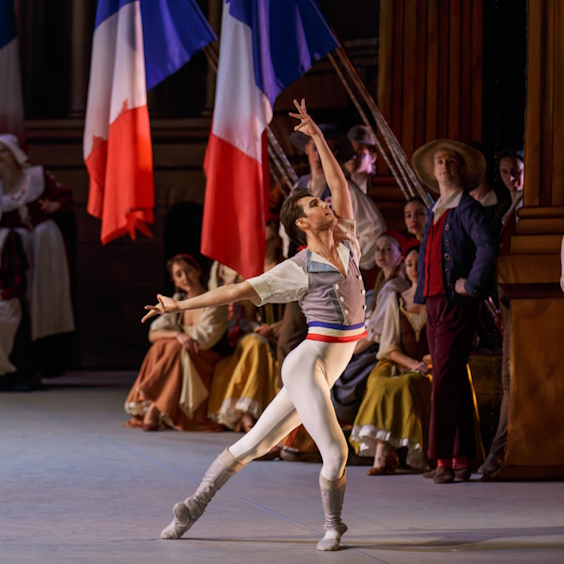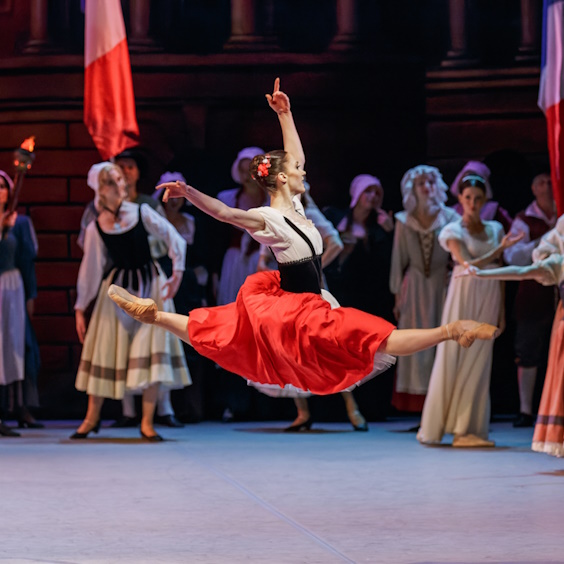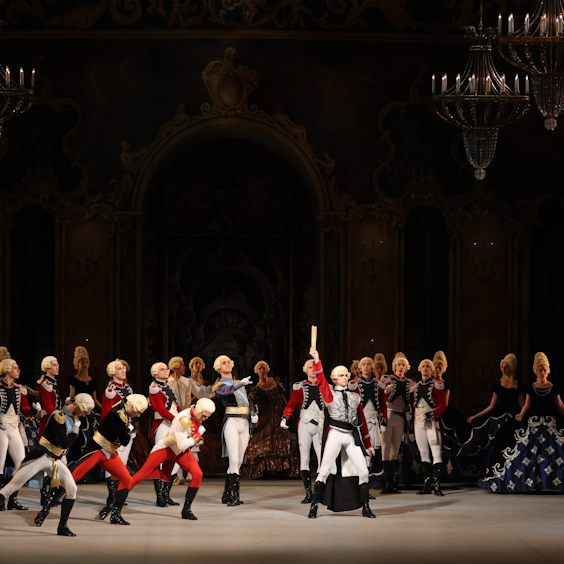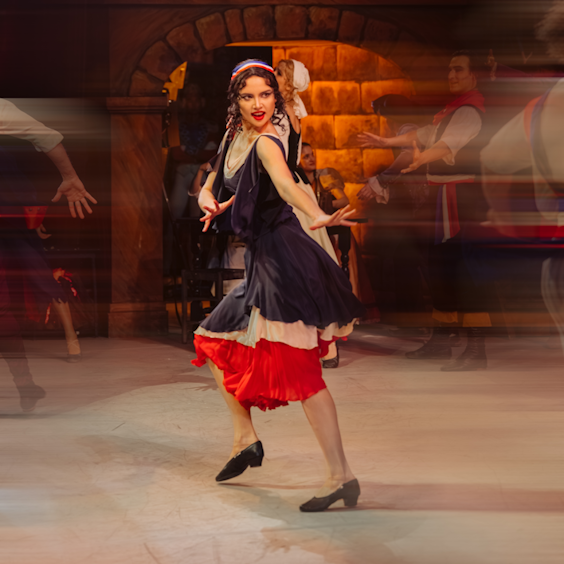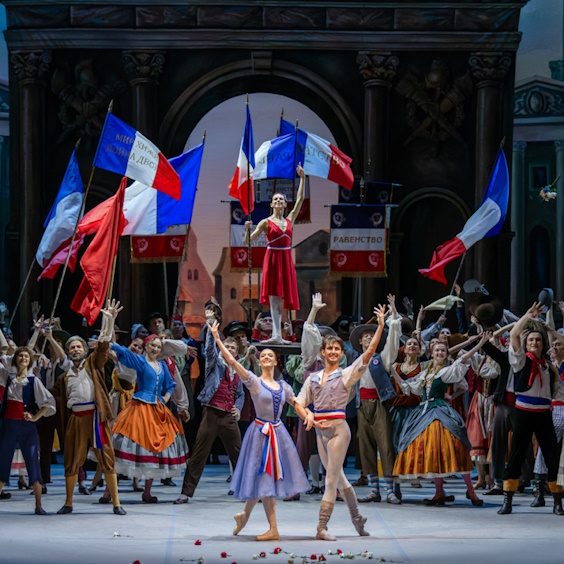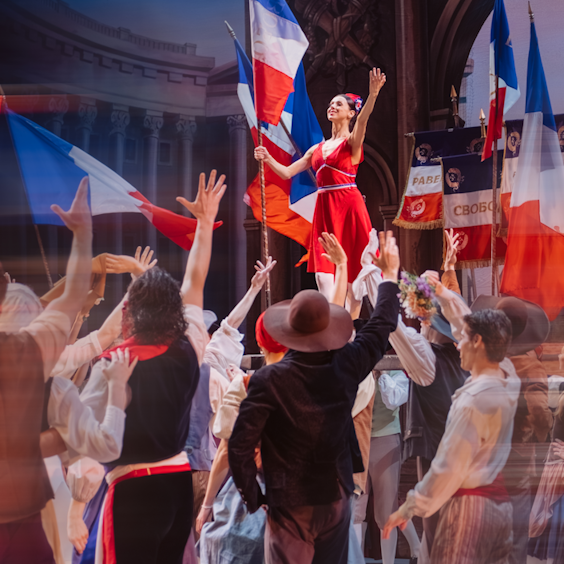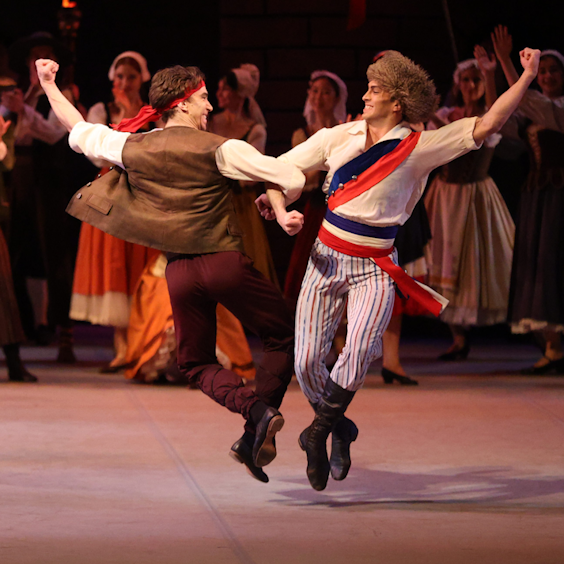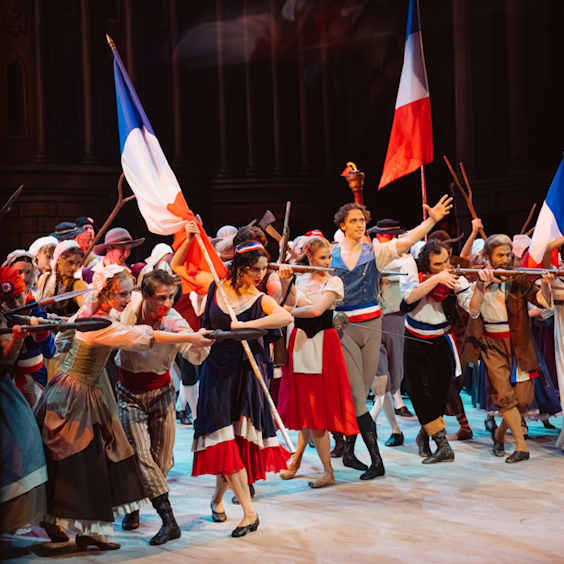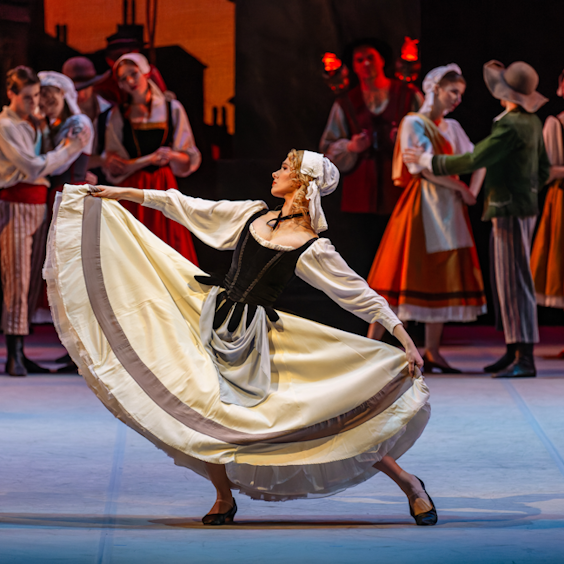
The Flames of Paris
ballet in three acts
music by Boris Asafiev
Cast
The legendary ballet about the events of the Great French Revolution is considered one of the greatest successes of the Soviet musical theatre. Its first spectators rose from their seats in a general impulse and sang the Marseillaise at the top of their voices together with the artists. The bright and spectacular performance of the Mikhailovsky Theatre not only preserves the choreographic text and mise-en-scènes of the original source, but also carefully recreates its revolutionary fervor. The large-scale production involves more than a hundred people — ballet dancers, extras, choir, and dance and acting merge into a single whole. This lively and energetic ballet continues to be a source of joy and faith in ideals.
Act one
Scene one
Summer of 1792. A suburb of Marseille. Edge of the woods near the castle of Marquis de Beauregard. Out of the woods there appears Gaspar and his children: 18-year-old Jeanne and 9-year-old Jacques. Jeanne plays with Jacques. The sound of the horn heralds the return of the Marquis from hunting. De Beauregard is furious with the peasants gathering the faggot in his wood. Gaspar is beaten up by the hunters from the Marquis’s suite; the huntsmen turn the cart over. Jeanne is trying to stand up for her father, the Marquis lets drive at her too, but on hearing the sound of the revolutionary song he hurries to his castle.
A squad of the Marseillais led by Philippe move through the woods on their way to Paris to help the revolutionaries. The Marseillais help Gaspar and Jeanne put the cart back on its wheels and put the faggot bands on it. Jacques is enthusiastically waving the revolutionary flag, given to him by Philippe. At the time, the Marquis manages to flee from his castle through the secret door.
The peasants greet the soldiers from Marseille. Philippe calls them to joins the squad. Gaspar and his children join the Marseillais. All of them move off to Paris.
Scene two
A ball at the King’s palace. Ladies of the court and the officers of the royal guard dance the sarabande. When the dance is over, the master of ceremonies invites the guests to see the performance of the court theatre. Actors Diana Mireille and Antoine Mistral perform an intermezzo, playing the victims of Cupid.
King Louis XVI and Queen Marie Antoinette arrive accompanied by their retinue. The officers raise their glasses to the prosperity of the monarchy. Marquis de Beauregard, who has just arrived from Marseille, enters. He shows the tricolor banner with the slogan “War to the palaces, peace to the huts!” and throws it at the King’s feet. The Marquis kisses the royal standard by the throne and reads out the message to the Prussians, written by him, in which Louis XVI should call Prussia to send troops to France and put an end to the revolution. The King is asked to sign the document. The King hesitates, but Marie Antoinette persuades him to sign the document. Marquis and the officers, in a burst of enthusiasm for monarchy, vow to fulfill their duty to the King. They draw their weapons and enthusiastically salute the royal couple.
The royal couple and ladies-in-waiting leave the ballroom. The footmen brings the tables in, more glasses to the monarchy are raised. The admirers of Diana Mireille invite the actors to take part in the celebration. They ask Mireille to dance. She and Antoine perform an improvised short dance, enthusiastically received by the audience.
The tipsy Marquis invites Mireille to dance, and she has to accept. His rudeness disgusts her, she would love to leave — but she shouldn’t. Diana tries to stay close to Mistral. He strives to distract the Marquis, but De Beauregard rudely pushes the actor away and several officers take Antoine back to the table. Ladies quietly leave the room. Finally Mireille finds a pretext to leave too, but the Marquis follows her.
Wine affects the guests, some of the officers fall asleep right at the table. Mistral notices the “Appeal to Prussia” left on the table. He starts reading it, first without thinking and then with more and more interest. The Marquis returns and notices the paper in the hands of Antoine. He runs amock, pulls out a gun and shoots the actor. Antoine is fatally injured. The sound of the gunshot wakes some officers up, they surround the Marquis and hurry him away.
Having heard the sound of the gunshot too, Mireille comes back. She sees Mistral’s lifeless body. She notices a piece of paper clutched in his hand and reads it. The sounds of La Marseillaise are heard. Now Mireille understands, why Mistral was killed, and she knows what she is to do. She takes the paper and leaves the palace.
Act two
Scene three
A square in Paris, where crowds of the citizens, the armed squads from provinces, including the Basques and men from Auvergne gather together. The Parisians are glad to see the squad from Marseille. A group of the Basques stands out by their readiness to fight. One of them is Teresa, an active participant of the street protests of the sans-culottes. Diana Mireille’s arrival stops the dances. She shows the crowd the appeal of the King to the Prussians, which confirms the betrayal of the aristocracy. People dance and sing La Carmagnole. Arms are distributed. Philippe calls to storm the Tuileries. Under the tricolor banners, singing the revolutionary Ça ira, the crowd moves to the King’s palace.
Scene four
Crowds of the armed people dash to storm the palace. Marquis de Beauregard brings the Swiss Guard soldiers to the palace. Suddenly the door flies open, the people burst into the chambers of the palace. Philippe bumps into Marquis de Beauregard. After a fierce fight with the Marquis Philippe knocks his sword aside, de Beauregard tries to shoot Philippe, but the crowd attacks him.
The Swiss, the last defenders of the King, are swept away. Teresa runs in holding the banner in her hands, and falls, shot dead by a bullet of an officer. The battle is over. The palace is captured. The Basques, Philippe, and Gaspar lift Teresa’s body over the heads, the people decline the flags.
Act three
Scene five
People are celebrating the capture of the Tuileries on the square of the former King’s palace. The merry dances of the people alternate with the performances of the Paris actors. Diana Mireille, surrounded by girls wearing ancient costumes, performs a dance with the tricolor flag that symbolizes victory of the revolution. Allegoric dances of Equality and Fraternity are performed. People shower Jeanne and Philippe with flowers: it’s also their wedding day. La Carmagnole is sung. People carry Diana Mireille as a symbol of freedom.
Premiere of the production: 22 July 2013
Libretto by Nikolay Volkov and Vladimir Dmitriev after the novel Les Rouges du Midi by Felix Gras revised by Mikhail Messerer
- ChoreographyVasily Vaynonen revised by Mikhail Messerer
- Stage and Costume DesignVladimir Dmitriev
- StagingMikhail Messerer
- Musical Director of the productionValery Ovsyanikov
- Musical Director’s AssistantValentin Bogdanov
- Revival of the Stage and Costume DesignVyacheslav Okunev
- Assistants in the revivalVyacheslav Lebedev, Anna Kotlova
- Lighting DesignerAlexander Kibitkin
- ProducerDmitry Astafyev, Dr. habil.
- Ballet Master’s AssistantsAnna Razenko, Evgeny Popov





